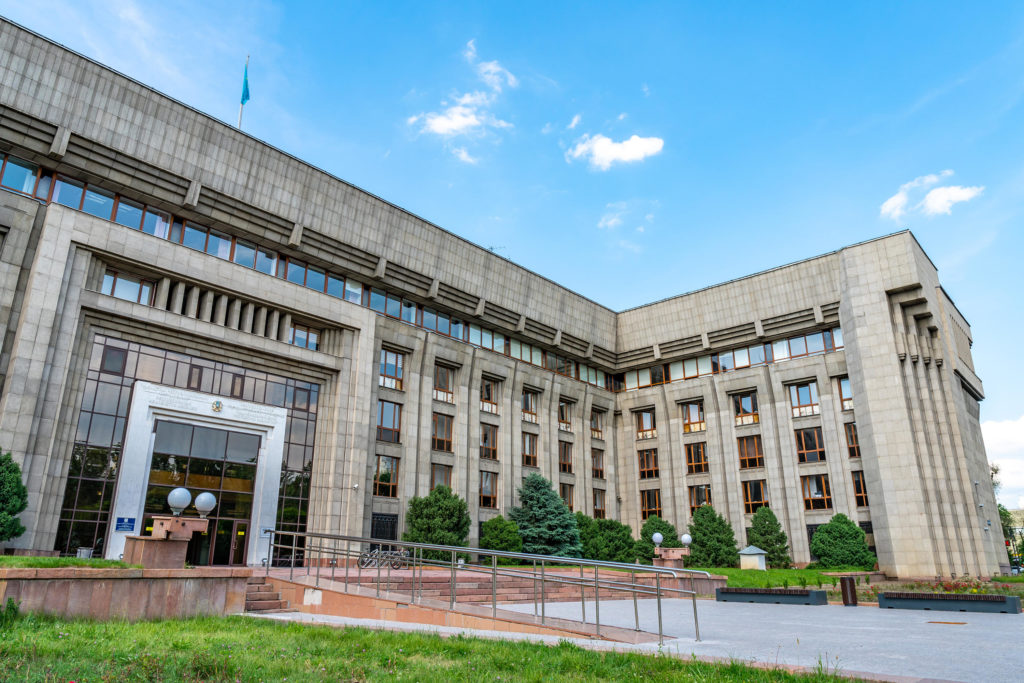NUR-SULTAN
Kazakhstan’s National Bank raised its key policy rate to 10.25 percent from 9.75 percent to curb annual inflation.
The bank had been holding the rate for seven months since cutting it by 50 basis points in July 2020, as it monitored inflationary pressures. In July 2021, the bank raised the rate to 9.25 percent, to 9.50 percent in September and to 9.75 percent in October. the rate was kept unchanged in December last year.
The rate corridor was kept at plus or minus 1.0 percentage points, the central bank said. The rate on access operations to provide liquidity was raised to 11.25 percent from 10.75 percent and the rate on access operations to withdraw liquidity – to 9.25 percent from 8.75 percent.
“The decision was made taking into account the need to reduce inflationary expectations and enter inflation into the established target corridor of 4-6 percent by the end of 2022,” the central bank said in a statement.
The bank said that in most economies of the world, including the countries that are the main trading partners of Kazakhstan, inflation continued to be at elevated levels, and the domestic environment, despite the presence of disinflationary processes in recent months, was characterised by the presence of “significant pro-inflationary risks both on the demand side and on the supply side.”
“The trajectory of core inflation points to the instability of the slowdown in inflationary processes. Various estimates of core inflation, after slowing down in August-November 2021, again show acceleration in December 2021, having formed above the target band,” the bank said.
“This is due to the high growth in prices for non-regulated goods and services.”
Consumer prices in Kazakhstan rose by 8.4 percent year-on-year in December after rising 8.7 percent in November. Monthly inflation in December was 0.6 percent down from 0.7 percent in November. Kazakhstan’s National Bank projected annual inflation in a range of 7.5-8.5 percent in 2021.
The central bank said it expected annual inflation to slow down to 6-6.5 percent by the end of 2022, but did not rule it could reach the target range of 4-6 percent.
“Taking into account the development of the situation in the global economy and current internal factors in Kazakhstan, according to the updated forecast, the National Bank expects a further slowdown in inflation to the level of 6-6.5 percent by the end of 2022,” the bank said.
The bank added that due to political events in Kazakhstan in early January and the relatively low base of the first half of 2021, an increase in inflationary processes was possible, the main pressure of which would fall on the first quarter of this year. In the second half of the year, after the expiration of the period of validity (180 days) of measures for temporary regulation of prices for socially important food, fuel and utilities, the risks of accelerating inflation may increase.
“At the same time, based on the current balance of risks, the instability of the inflation slowdown at the end of 2021, including due to the acceleration of the non-food component, as well as elevated inflation expectations, the National Bank continues to tighten monetary policy,” the bank said. “Together with the effective implementation of the set of measures developed by the government to control inflation, the disinflationary monetary policy of the National Bank will reduce inflation in accordance with the target set for 2022 – 4-6 percent.”
Kazakhstan’s economy continued to grow and get closer to pre-pandemic levels in the first ten months of the last year, supported by a strong performance in services, communications, construction and trade.
Gross domestic product (GDP) grew by 3.5 percent year-on-year in January-October with an oil price of $69.3 per barrel over the same period.
Mining and manufacturing, trade, construction, information and communications, transport and the public sector made positive contributions. Agriculture has a restraining effect on economic growth, which showed a decline in production in January-October. The main reason for this dynamics was the decline in the gross harvest of grain crops.

